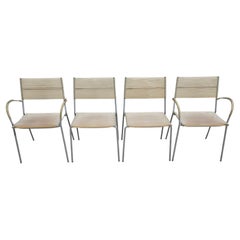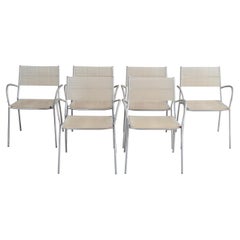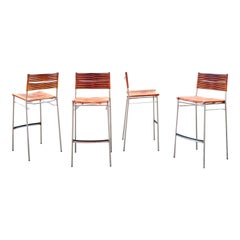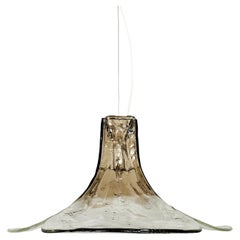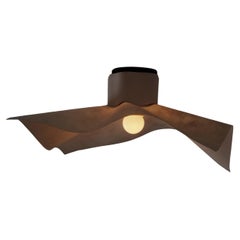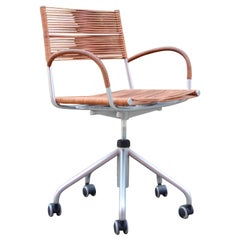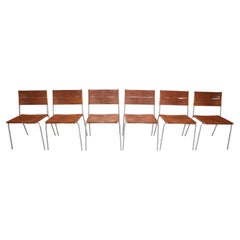Miss B Tito Chair
1990s Italian Post-Modern Dining Room Chairs
Steel
1990s Italian Modern Dining Room Chairs
Chrome, Steel
1990s Italian Modern Stools
Stainless Steel, Chrome
People Also Browsed
Vintage 1960s Italian Mid-Century Modern Chandeliers and Pendants
Metal
Vintage 1970s Italian Mid-Century Modern Wall Lights and Sconces
Ceramic, Natural Fiber, Plastic
21st Century and Contemporary American Scandinavian Modern Wall Lights a...
Copper
21st Century and Contemporary American Mid-Century Modern Wall Lights an...
Brass
2010s South African Minimalist Night Stands
Wood
21st Century and Contemporary Swedish Mid-Century Modern Table Lamps
Textile
21st Century and Contemporary American Mid-Century Modern Flush Mount
Brass
Vintage 1970s Italian Modern Dining Room Chairs
Steel, Chrome
Vintage 1950s Italian Mid-Century Modern Beds and Bed Frames
Walnut, Birch
Vintage 1980s Italian Mid-Century Modern Console Tables
Leather, Wood
Late 20th Century Italian Mid-Century Modern Stools
Wood, Rope
21st Century and Contemporary French Brutalist Night Stands
Oak
2010s French Mid-Century Modern Flush Mount
Metal
Vintage 1960s Italian Mid-Century Modern Wall Lights and Sconces
Brass, Nickel
21st Century and Contemporary Portuguese Organic Modern Center Tables
Travertine
Vintage 1970s American Mid-Century Modern Dining Room Chairs
Chrome
Recent Sales
1990s Italian Modern Office Chairs and Desk Chairs
Steel, Chrome
21st Century and Contemporary Italian Mid-Century Modern Dining Room Chairs
Stainless Steel
1990s Italian Modern Stools
Stainless Steel, Chrome
Late 20th Century Italian Modern Chairs
Aluminum
Tito Agnoli for sale on 1stDibs
Prolific designer Tito Agnoli created imaginative furniture with a singular mix of natural and industrial materials. Designing in the modern and mid-century modern styles, he made sofas, armchairs and daybeds from leather, bamboo and rattan as well as metal table lamps and floor lamps.
Born into an Italian family in Peru in 1931, Agnoli studied at the Faculty of Architecture in Milan. In 1949, he graduated with a degree in architecture from Politecnico di Milano. While there, he became acquainted with designers Gio Ponti and Carlo De Carli. He later worked with them as an assistant, learning to create austere pieces with flawless dimensions.
Utilizing this knowledge, he developed his own practice and worked with many Italian producers, including Arflex, Cinova, Lema, Matteo Grassi, Molteni, Montina, Oluce, Pierantonio Bonacina, Poltrona Frau, Schiffini and Ycami.
Agnoli received prestigious nominations for the Compasso d’Oro award. At the 1986 NeoCon exhibition in Chicago, he won a gold medal. His works are in the collections of the Museum of Modern Art in New York.
On 1stDibs, find a stunning collection of vintage Tito Agnoli seating, lighting, tables and more.
Finding the Right Seating for You
With entire areas of our homes reserved for “sitting rooms,” the value of quality antique and vintage seating cannot be overstated.
Fortunately, the design of side chairs, armchairs and other lounge furniture — since what were, quite literally, the early perches of our ancestors — has evolved considerably.
Among the earliest standard seating furniture were stools. Egyptian stools, for example, designed for one person with no seat back, were x-shaped and typically folded to be tucked away. These rudimentary chairs informed the design of Greek and Roman stools, all of which were a long way from Sori Yanagi's Butterfly stool or Alvar Aalto's Stool 60. In the 18th century and earlier, seats with backs and armrests were largely reserved for high nobility.
The seating of today is more inclusive but the style and placement of chairs can still make a statement. Antique desk chairs and armchairs designed in the style of Louis XV, which eventually included painted furniture and were often made of rare woods, feature prominently curved legs as well as Chinese themes and varied ornaments. Much like the thrones of fairy tales and the regency, elegant lounges crafted in the Louis XV style convey wealth and prestige. In the kitchen, the dining chair placed at the head of the table is typically reserved for the head of the household or a revered guest.
Of course, with luxurious vintage or antique furnishings, every chair can seem like the best seat in the house. Whether your preference is stretching out on a plush sofa, such as the Serpentine, designed by Vladimir Kagan, or cozying up in a vintage wingback chair, there is likely to be a comfy classic or contemporary gem for you on 1stDibs.
With respect to the latest obsessions in design, cane seating has been cropping up everywhere, from sleek armchairs to lounge chairs, while bouclé fabric, a staple of modern furniture design, can be seen in mid-century modern, Scandinavian modern and Hollywood Regency furniture styles.
Admirers of the sophisticated craftsmanship and dark woods frequently associated with mid-century modern seating can find timeless furnishings in our expansive collection of lounge chairs, dining chairs and other items — whether they’re vintage editions or alluring official reproductions of iconic designs from the likes of Hans Wegner or from Charles and Ray Eames. Shop our inventory of Egg chairs, designed in 1958 by Arne Jacobsen, the Florence Knoll lounge chair and more.
No matter your style, the collection of unique chairs, sofas and other seating on 1stDibs is surely worthy of a standing ovation.
